#Luxury salon furnishings
Text

#Barberchair
Glamsalonfurniture.com offers chic and comfortable barber chairs that will transform your salon. Examine both contemporary and traditional designs that enhance elegance and functionality. Come see us if your salon could use a little extra luxury!
Click here:-beauty salon equipment wholesale
#Barber chairs#Salon furniture#Stylish salon chairs#Modern barber equipment#Comfortable salon seating#Luxury salon furnishings#Professional barber chairs#Contemporary salon furniture#Quality salon fixtures#Elegant styling chairs#Trendy salon decor#Beauty salon essentials#Hairdressing chairs#Salon interior design#Premium salon seating#Barber chair#beauty parlour chair#beauty parlour chair low price#beauty parlour furniture#beauty salon equipment wholesale
1 note
·
View note
Text
Storytelling Set: Lot download
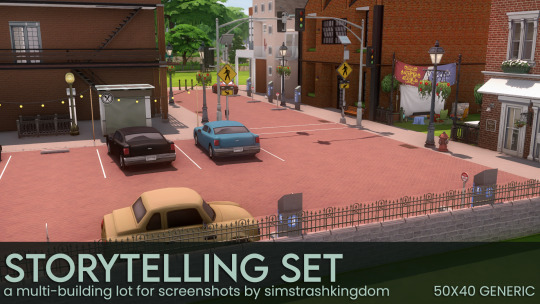
Lot Name: Storytelling Set
Lot Type: Generic
Lot Size: 50X40
Location: Built on Twin Oracle Point in Newcrest
I'm coming to you today with a special download. This lot is a labor of love that I'm excited to share with you all. It requires a bit of explanation, so please read this description!
I designed this lot to use as a catch-all for my story when I didn't want to create/download an entire lot for one scene. The buildings are mostly unfurnished, but there are 2 that are fully furnished: a generic office building and a hotel. There is a furnished rooftop bar and a party room in another building but the rest is up to you! The beauty of this lot is that it can be what you make it. One floor can be a salon, while another can be a daycare. The exterior can be one thing while the interior is another.
You can see how I've used this lot in this post (I added a deco building to the neighboring lot to add to the immersion). I've also used the basement area to plop down rooms from the gallery.
PACKS USED: High School Years, Cottage Living, Snowy Escape, Eco Lifestyle, Discover University, Island Living, Get Famous, Seasons, Cats and Dogs, City Living, Get Together, Get to Work, My Wedding Stories, Dream Home Decorator, Jungle Adventure, Parenthood, Dine Out, Spa Day, Outdoor Retreat, Moschino, Backyard, Perfect Patio, Kids Room, Luxury Party, Little Campers, Blooming Rooms, Industrial Loft, Courtyard Oasis, Desert Luxe
PLEASE NOTE this lot is CC Free but I used a lot of packs and many debug objects. If you are missing any packs that I have, the lot may look quite different. This was playtested, but please let me know if you have any issues.
Pics and download below!
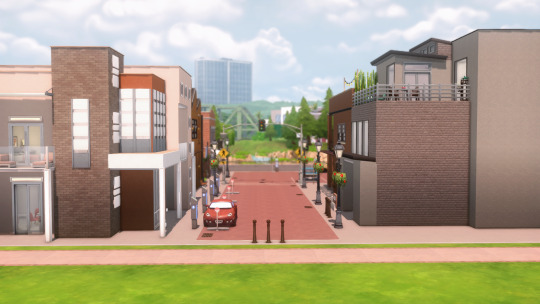
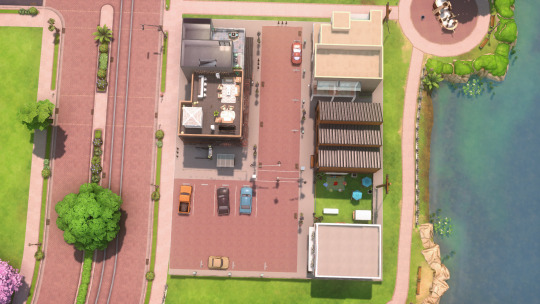




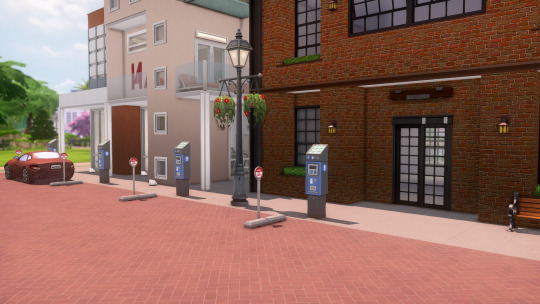

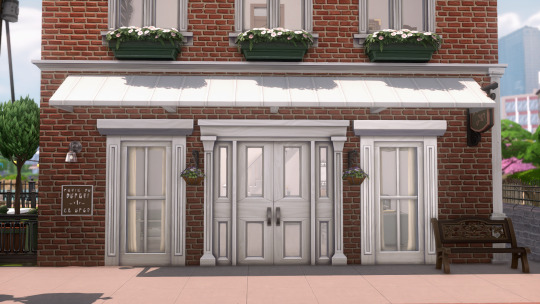
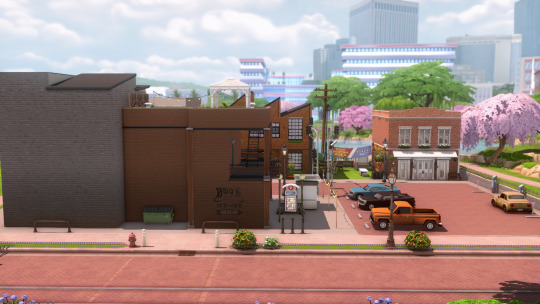
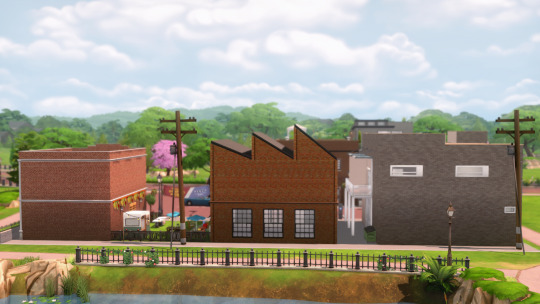

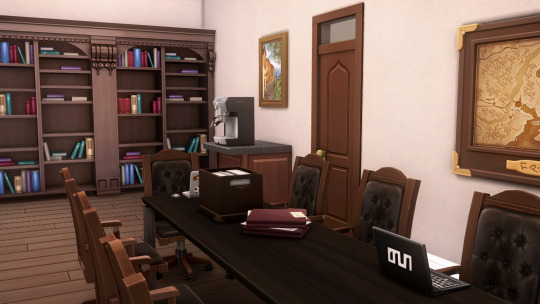
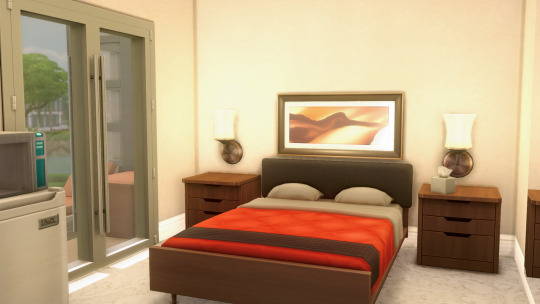




DOWNLOAD: Sims File Share | Google Drive | Gallery: simstrashkingdom
TOU: Honestly, do whatever as long as you don't put it behind any paywall! Credit is appreciated. I would love to see what you've done so please tag me if you use this!
#ts4#the sims 4#sims 4#the sims#ts4 build#ts4 lot#sims 4 build#showusyourbuilds#ts4cc#ts4 download#ts4 nocc#ts4 nocc build#sims 4 nocc#sims 4 nocc build#myCC
99 notes
·
View notes
Text


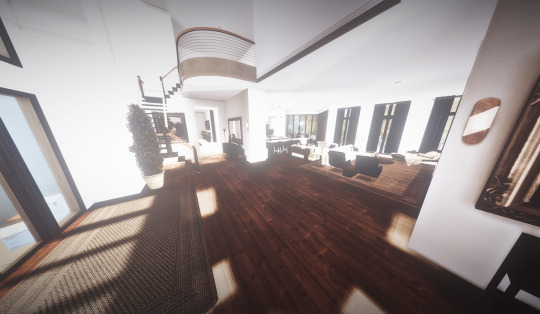
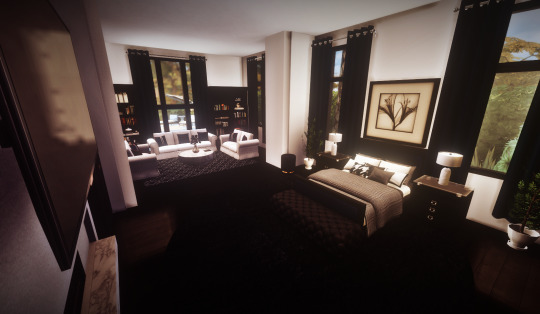

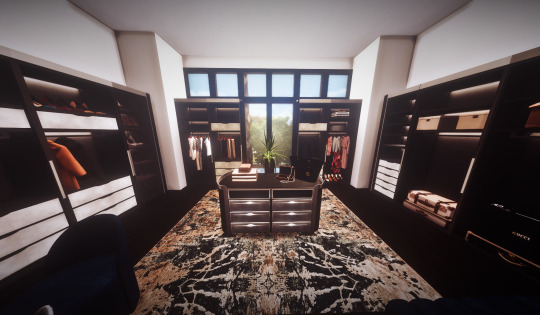
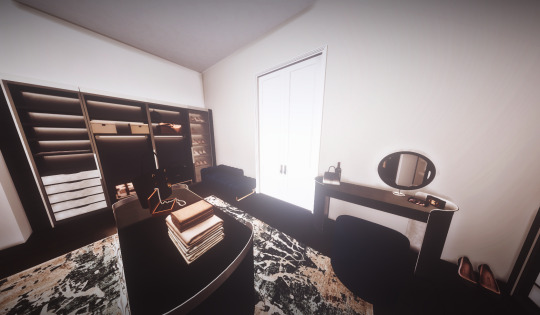
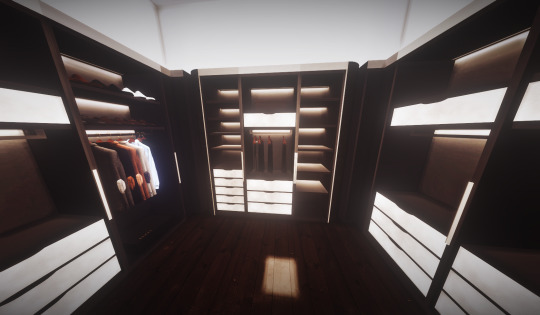
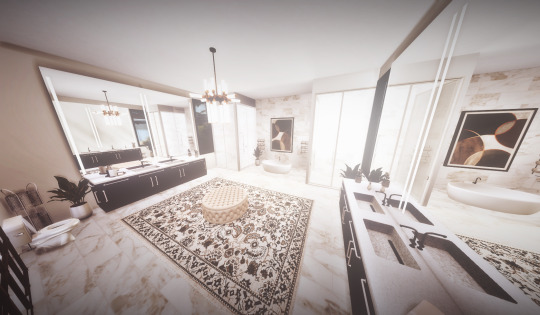



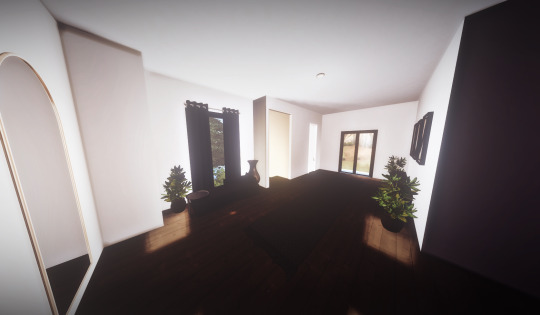
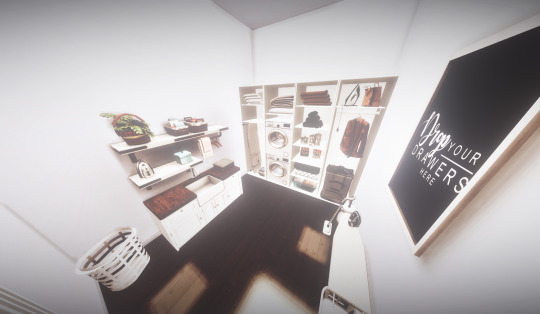
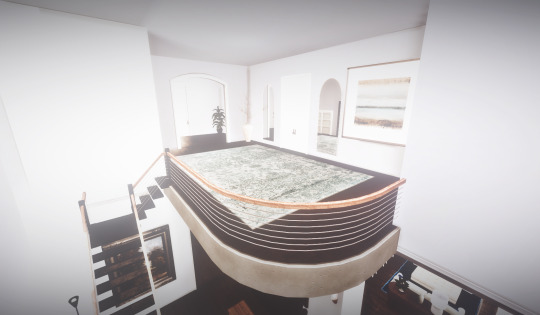
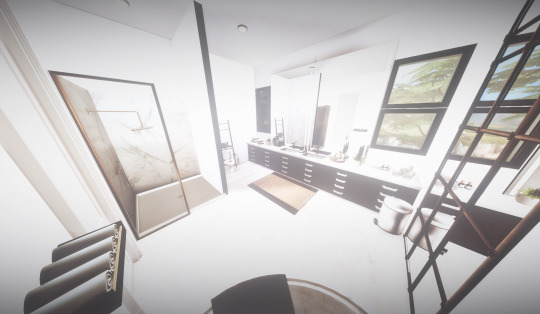
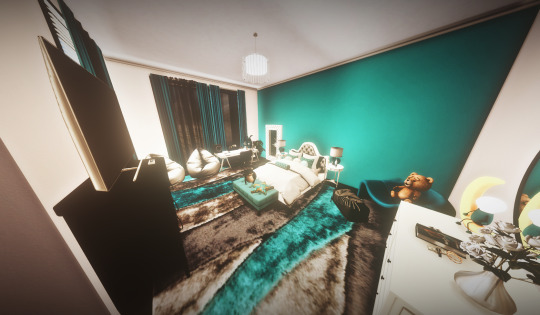

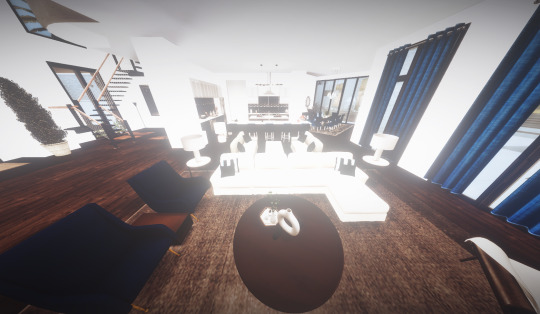
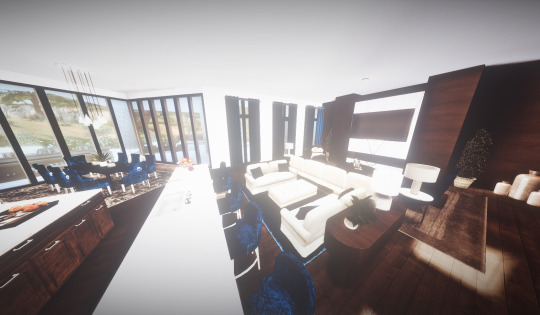
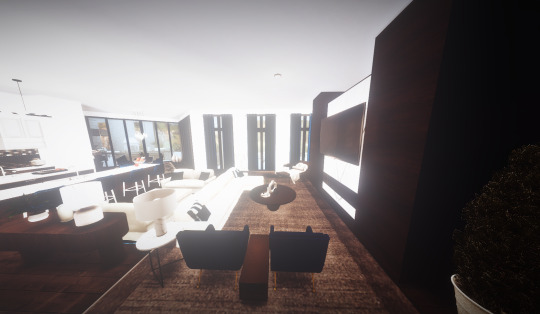


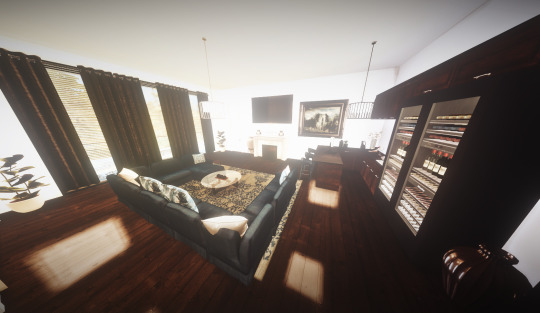
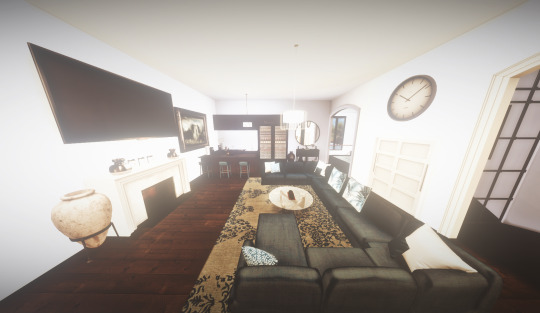


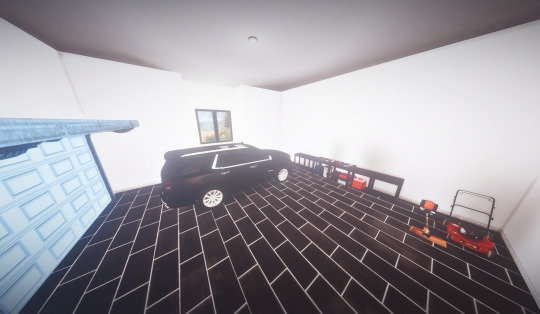


Waters Edge Modern Mansion | The Sims 4 Build
Fully furnished Modern mansion.
5 Bedrooms
5 Bathrooms
Walk-in Closet in Each Room
Study Room
Exercise Room
Grand Salon
Laundry Room
Luxury spacious backyard with a pool.
Lot Size 50x50 {Willow Creek}
Thank you to all creators that made this build possible!
Download(Patreon)
#sims 4 mansion#sims 4#ts4 mansion#ts4 interior#ts4 custom content#ts4 download#ts4cc#ts4 simblr#the sims 4#ts4 gameplay#sims 4 house#sims 4 download#sims 4 cc#sims 4 screenshots#sims 4 maxis match#the sims 4 mods
155 notes
·
View notes
Photo


This travelogue and other photo finds now give a very deep insight into life and travel on board the passenger ship 'Monte Olivia', which was advertised in 1925 as 'the most modern and tastefully furnished floating hotel building'. The 160 meters long and 20 meters wide ship, a colossus with 20000 tons of water displacement, had two large dining rooms, social hall, smoking room, writing room, reading room, and a large butcher's room, an electric canteen, a bakery, an on-board laundry, two hairdressing salons, and there was running water in the cabins. The ship could accommodate 2528 passengers and 369 crew members..
However, the 'Monte Olivia' was not a luxury ship, but only had a third class. Nevertheless, she was characterized by technical details at that time: The 'Monte Olivia', on October 28, 1924 at Blohm&Voss launched as the second of five 'Monte' class passenger ships, had four six-cylinder diesel engines, two propellers, two smokestacks and an output of 6200 hp. At the time, they were considered the largest motor ships in the world and ushered in a new era of passenger shipping on the South Atlantic and beyond.
The maiden voyage of the 'Monte Olivia' was on April 23, 1925 from Hamburg to Montevideo and Buenos Aires. She was then used as a cruise ship, and since 1934 also for strength-through-joy voyages to Norway and the Baltic Sea. But from 1940 she was used differently: she served as a residential ship for the Navy.
In February 1945 she was finally converted into a hospital ship, painted white accordingly and provided with green stripes and red crosses on the funnels. According to a letter to the editor from a former ship's doctor in the magazine 'Schifffahrt international' from 1993, on April 3, 1945 she was in need of repairs at the north mole in Scheerhafen.
As reported, two days earlier, when leaving for her first planned mission as a hospital ship, she had rammed a submarine lying on the bottom of the port of Kiel that had not set a buoy. During the heavy air raid on April 3, her ship's side tore open due to several bombs falling next to her.She capsized and remained on her side.
A good read and story Thank-You SK
4 notes
·
View notes
Text

As both maker and muse, avant-garde fashion designer Emilie Flöge’s influence weaves through the history of Vienna and contributes to its allure as a cultural destination today. Born in 1874, Flöge advanced from seamstress to boutique owner at a time of rapid societal change. As she inspired—and was featured within—masterworks by the acclaimed Austrian painter Gustav Klimt, she also pioneered liberation for women through corset-free clothing with flowing silhouettes and ornate decorative motifs.
The fact that Flöge is better known for her collaborative relationship with Klimt neglects her exquisite craft and independent entrepreneurial success in Vienna during the fin-de-siècle. Flöge’s style was part of an international discourse that included French couturiers Paul Poiret, who removed bodices from his creations in 1906, and Coco Chanel, who introduced comfortable but elegant two-piece women’s suits. Though Poiret’s developments were primarily aesthetic, Flöge’s and Chanel’s were ideological and fanned attention to a sense of rebellion.

Flöge, with sisters Pauline and Helene, opened the salon Schwestern Flöge (which translates to “Flöge Sisters”) in 1906, four years before the first Chanel boutique opened in Paris. Being owned and operated by three women was an uncommon undertaking at the time, but its lively location on Mariahilfer Straße welcomed bourgeois women who became regular patrons. It was here that Flöge contributed to the expanding “rational dress movement” of reformed shapes, also known as the “Reformkleid,” where generous cuts with wide sleeves draped playfully over the wearer. Flöge embellished these dresses with patterns that drew inspiration from Eastern European embroidery, which imparted the smoke-like garments with a glamorous Viennese-bohemian spirit. This was radical, unrestricted fashion.
Schwestern Flöge was a predecessor to what we today refer to as a concept shop. Designed by architect Josef Hoffmann (who also imagined Klimt’s studio), it was uniquely furnished with geometric wooden chairs, checkered tables, carpets, and adjustable mirrors. It was also peppered with objets d’art and luxury items, crafted from tortoiseshell and lapis lazuli, that couldn’t be purchased. With the store’s detailed logo, which paired art nouveau text with a checkered border, a fully-formed brand captured the attention of Vienna’s high society.
Flöge’s role as creative head required everything from broad, trend-setting decisions to hands-on production work with clients. The studio expanded to 80 seamstresses at its height, and operated for 30 years. Both feats were a testament to Flöge’s acumen, as was her success beyond Vienna with a curious international market. At home, Schwestern Flöge became the leading fashion destination of its Viennese society—and this innovative venture paved the way for shopping in contemporary Vienna.
Today, concept shops and boutiques abound, from the hybrid fashion, art, and design store SONG, to Park, which highlights established and emerging Austrian designers. While Mariahilfer Straße is still a celebrated destination (especially with locals), Margaretenstraße plays host to the exhilarating boutiques Samstag, Unikatessen, Wolfensson, and more. Walking through the historic city center, as well as the Goldenes Quartier, provides ample access to items beyond clothing and accessories, too.
As fashion is ingrained in Vienna, so too is art. This is due in part to Klimt’s legacy, and his work appears in museums throughout Vienna—especially at the Schloss Belvedere, an acclaimed institution with a detailed Austrian art collection that also includes pieces by Egon Schiele and Koloman Moser.
In his time, Klimt purchased fashionable items from Flöge, but that isn’t how they knew one another. Their lives were intertwined long beforehand, with their first known correspondence taking place in 1895. Though it has been presumed they were in love, both were discreet about anything beyond friendship, which has been observed through nearly 400 written documents that they exchanged.
“Her intricate fashion was very much sought after and, much like Klimt’s paintings, a must-have among the fashionable and artistically minded.”
Sandra Tetter, director Gustav-Klimt-Centre on Lake Attersee
It’s her role in his art that has led to further assumption—from the “Portrait of Emilie Flöge,” where Klimt depicts her with shimmering splendor, to “The Kiss,” which is arguably his most famous work (and on display at Schloss Belvedere). In the former, Klimt displays the revolutionary golden style that will define him. With the latter, a couple—arguably Flöge and Klimt—passionately embrace, adorned with mesmeric attire that resembles her fashion.

In addition to painting Flöge, Klimt worked in collaboration with her. Together, they explored color and form, and she even produced designs that he made. In these, they were photographed together around Lake Attersee, a pristine destination (then and today) with exquisite panoramas. They regularly summered together in various villas along the lake, which today can be toured through the Klimt Artist Trail, organized by Sandra Tetter, director Gustav Klimt Center on Lake Attersee art center, which transports visitors to the artist’s time at the site where he created over 40 landscape paintings.
When Klimt died in 1918, part of his estate went to Flöge, and his purported last words were, “Get Emilie.” Klimt imbued Vienna with a golden luster that mirrors his own artistic achievements. For this, he has become a ubiquitous figure in the arts world, whereas Flöge has fallen into relative obscurity. Her legacy does live on, however, from an honorary grave in the Wien-Simmering cemetery to the global revival of attribution occurring today. Even Maria Grazia Chiuri and Pierpaolo Piccioli referenced Flöge’s “Reformkleid,” through liberated shapes and opulent patterns, with their Fall/Winter 2015 collection for Valentino.
A dazzling contemporary cultural attraction for its art history, grand café culture, extravagant ball season, and sheer natural beauty, Austria’s charm parallels that of Flöge’s—and to think of visiting Vienna or Lake Attersee means looking to her future-forward values and what they mean today.
#Emilie floge#Emilie Flöge#gustav klimt#art#art history#women in history#women in art#vogue#fashion#fashion designers
8 notes
·
View notes
Text
The Long Labors
My grandmother said it was going to be long—as long as you can hold your lineage—depending on how long you can hold your tongue—as long as your tongue can wrap around the pit—of some stolen stone fruit—as long as you can hide your pitter-patter face—glued in sun-split splinters—lengthening shadows as long as your face—longing to be mirrored back—back to your daughter your mother your grandmother—freckle by freckle—furnished forever across—the long loaming haul— Collapsed in a pool of spit—my mouth over papers—raccoon doctorate—luxurious loser with thin branch fingers—no meat in the palm—no muscle in the bending—the farmer in me is atrophying—the cook the factory seamstress the clerk the mother in me is pooling out—all that I come from—all that I owe to them—what is left of me—what is—me: professorial rat—book-leavened and maddened in meetings—chewing at my desk on a frozen anything—microwave spun and splattered on lessons—wondering who packaged this—who spooned this glacial sauce into this plastic hull—whose hands whose daughter does she look like me does she like dancing in the gloaming—funneled into my greedy mouth—I: daughter of long labors—I: knock-off half-price guilt—I: impossible imposter big words big words—trying to prove what—and to whom—I wait to be seated at a restaurant—a white person enters and orders from me—“I want sweet and sour chicken but without bell peppers and brown rice”—and I almost take it down— In the twelfth hour of night-shift overtime—my mother gobbles the air of the facility—mouth opening a cavern or a bowhead whale or a sinkhole—gobbling up its oxygen its nitrogen its argon its skin its hair dust its swirling smog—collecting time collecting benefits—her eyes so baggy they carry a leaking pack of chicken breasts—she had planned to cook tonight for us—but look at the break room clock she is out of time and now—they will surely go bad—what a waste at $1.50 a pound—she returns to her station rubs tiger balm and lavender oil along her wrists and hands—chews dried ginger to keep awake—the root of herself sharpening salivating—reapplies pink lipstick swivels the tube upward—rituals of resilience—feeds letters to machines churning intestinal noise—electricity bills and love letters and baby photos and magazines ladies who lunch will take to the salon and credit card limited-time offers and reminders from the dentist and supermarket weeklies and postcards from Oahu—“you wouldn’t believe how blue the water how restful how peaceful bring the whole family next time”—ginger chew ginger chew— Who made this for you—do you know the song that reminds them of home—do you know to play the radio as loud as you can and roll down the windows and smack your cheeks ten times in order to stay awake for the drive—do you know who sewed on this button—do you know the murmuring leg ache from standing all day a tree for whom—do you know who processed the letter you received today—fed it into a machine with paper cuts as wide as a river you could float in—do you know how long you can hold your urine until your 15-minute break—the roiling pressure in the abdomen the tick-tap of the feet the hands—how much to tip the gas station attendant in Jersey how the smell sticks behind both earlobes—the temperature when flipping a wok the oil burns the white paper hat measuring salt at the brim—how your impatient face resembles a slowly rotting peach—worms in the snarl—do you know the name of your fishmonger the name of my uncle—the times he snuck in a call to say he will be late picking up his daughter fish scales glittered to his elbows like opera gloves—do you know cuticles peeling white like flecks of cod after washing dishes—do you know the smell of nail polish remover stinging bees in your nostrils—do you know the back—how the back curls how the back bridges how the back puckers and crunches—like packed snow no one else but you will shovel out—I look up how labor is used in a sentence—“the obvious labor”—“immigrants provided a source of cheap labor”—“negotiations between labor and management”—“wants the vote of labor in the elections”—“the flood destroyed the labor of years”—“industry needs labor for production”—anthropocene capitalism gentrification—what do these words mean—and to whom—helping my mother over the sink—I snip the ends of long beans 豆角 with kitchen shears—the ends rolling away—green lizard tails—I cut away each word like a long bean—gentrificat—gentrif—gen—ge—g—glugging the g—down the drain— If only lying on a beach—limbs loosened like an old garden hose—if only watching the movements of our stomachs—rising and falling like baby jellyfish—our thighs waxing and waning—in bristle-rough sand if only—reading a book the pages—wrinkled and curled like a snail shell—from falling asleep against our faces—if only devouring a cloud—full of no rain no metallic muscle if—only softness if only we—went off in the softness—into the downy relaxing abyss—what is this word—vacation—my grandmother asks me chili hitting the wok like delicious dying stars— My grandmother said it was going to be long—going out the door always late for work—shirt inside out—said go on and bounce a howling baby (my mother/me/et al)—while skimming oxtail broth—the fat sheen of look how well we eat in this country—lest you forget it was worth it—lest you forget—the dilation of the cervix going the contractions going the grip the placenta the shit the vernix the garbled life going the soft flashlight eyes the milk the teeth the nails the hand on heart the soup coagulating on the stove—you must go—for what gleams in the dark turns to look at you—remember this— The work and the afterwork and the work of being perceived as not doing enough work though you are working well over enough—will this ever be enough—when is enough enough—the chorus now: not until the knots of fat—melt in this wok—not until you have nothing left but this suet—this smear of high-heat lineage—gleaming in the gloaming—and it is yours and it is mine and it is your dream daughter’s and it will last longer than you will ever believe—believe us—
Jane Wong, How to Not Be Afraid of Everything (Alice James Books, 2021)
4 notes
·
View notes
Text
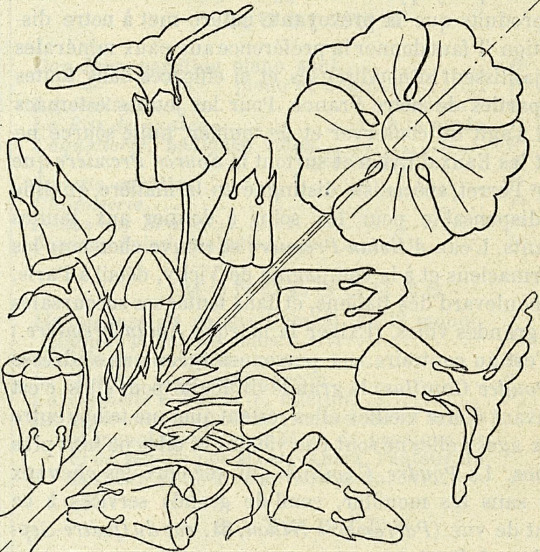
An essay on modern decoration.
By Thérèse Magniant. La Mode illustrée, no. 26, 27 juin 1897, Paris. Ville de Paris / Bibliothèque Forney.
For several years, a transformation has taken place in furniture and decoration. Traditional tapestries were followed by simpler fabrics, with less conventional ornamentation and inspired more directly by nature. The scientific discoveries of this century, by upsetting our morals and our lives, have led us to also modify our taste. Not only are the means of transport no longer the same, but our clothes and our homes have undergone radical transformations. Our apartments, which are more cheerful, brighter, more comfortable, and enjoying much better lighting, require new decorations. Also, modern art has taken care to replace the Louis XV, the Louis XVI, all this learned and complicated decoration which corresponded to the sumptuous luxury of the last century, to the floral dresses of our grandmothers, to the jabots of our grandfathers, but which formed such a singular contrast with our dark clothes and our woolen suits!
There is a very strong need on all sides to transform the environment in which we live
There is a very strong need on all sides to transform the environment in which we live: we would also like to put our readers in a position to follow the new path which is opening up in the art of decoration, and allow them to bring their personal touch to their furnishings.
Instead of copying Louis XV or Louis XVI subjects, by disfiguring them, which inevitably happens, even to the most skillful, would it not be more pleasant for them to choose, for example, their favorite flower, to compose decorative motifs for their living room and thus leave a bit of themselves in everything around them? How many banal salons through the repetition of the "déjà vu" could finally disappear and make way for original and interesting furnishings, the different pieces of which would only be variations of the same theme.
There are very few young girls who do not know, for having wished to see the walls of their room hung with them, these fresh fabrics, the initiator of which in France was Liberty. Wouldn't it be nice to be able to recall in the multitude of tapestry or embroidery accessories that adorn our apartments (cushions, chair tops, piano tops, centerpieces, etc.) the decoration of the hanging, but simplified and appropriate to the shape of the object to be decorated?
This is the pleasure that will be easily obtained by those of our readers who are willing to lend us a little of their attention and follow the advice that we are going to give them. The task is easy: all it takes is a little good will to see it through.
I.
Decoration of a flat surface.
When we have a surface to decorate, we must first look for the general aspect that the decoration must have, the shape that we want it to affect. This done, it will be necessary to divide this surface by lines of construction: these lines will determine a certain number of parts intended to receive, in a general way, the same reason for decoration.
Construction lines are temporary, but still essential; for, in drawing, as in all things, one must prepare one's work well to obtain good results. These lines are to composition what scaffolding is to the construction of a house. There can be neither regularity nor precision without them, and far from complicating the work, they simplify and make it easy.
Consider plate 1, representing a square that we want to adorn with four motifs, starting from the center and ending at the corners of the square.

If we draw the lines A B and C D, we obtain the surfaces I, II, III, IV, which will allow us to determine exactly the size of the pattern to be sought. Draw the diagonals E H, G F, from the square, and we will have the middle of these motifs: we therefore only have half a motif left to find. The lines we have just built have therefore saved us a lot of trial and error and difficulty.
Is it a question of sewing in this same square? It will be necessary to change the arrangement of the lines of construction and to establish them as in plate 2. We divide the sides of the square into as many parts as we want to repeat the motifs many times and we join the opposite points.
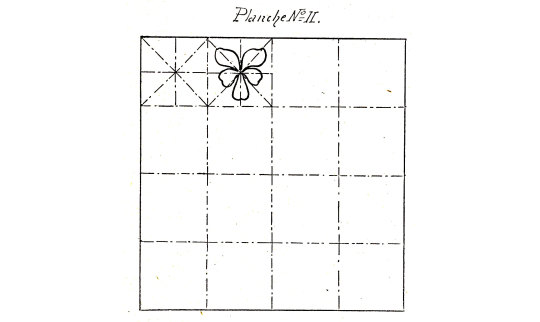
In addition to the provisional construction lines, it is possible, with the help of geometry, to compose ornaments which will be preserved in the final execution, and which, without altering the clarity of the design, will lend more richness to the whole of the decoration. These ornaments are used a lot in embroidery and tapestry, either to give variety in the background tones, or to separate the decorative motifs and bring out the different parts. This is how in plate 3, which represents geometric constructions inscribed in a square, the flowers will be arranged in the free spaces.

In summary, to make an ornamental composition, one must:
Look for the general aspect that you want to give to the decoration:
Divide the surface by construction lines subordinate to this aspect.
Look for the decoration pattern.
II.
The decorative pattern.
We will always borrow the decorative motif from natural elements, that is to say from flowers, fruits, insects: we will see that this field is vast enough to satisfy all tastes, meet all needs, and all abilities. Those of our readers who have not made special drawing studies will choose uncomplicated motifs, and it will often be the prettiest flowers, such as the narcissus, the primrose, which will come to offer themselves to them and console them for their lack of knowledge: in the composition of an ornament the simplest flowers indeed most of the time give the happiest results. Those of our readers who are already familiar with the study of drawing will be able to involve several kinds of flowers in the same composition: but, for some as for others, all that is needed is a little taste, attention and care to achieve equally charming decoration patterns.
We are going to begin the study of natural elements with that of the plant, which can be reproduced as we see it, that is to say natural, or which can be interpreted.

When drawing the natural plant as was done in Plate IV, choose a model that is as perfect as possible, for example do not take a damaged flower or one that is missing petals. It should also be remembered that single flowers are the most decorative: this is how the rose and the double dahlia are difficult to use in decorative designs, while the rose hip and the single dahlia lend themselves to the most graceful combinations. But, whatever the model we want to draw, we must carefully observe its character and try to reproduce it exactly. In decoration, as in all other parts of art, it is never permissible to alter the truth, and nature is always the best guide.
However, the natural plant alone cannot provide enough varied and interesting patterns, and the decoration would quickly become monotonous. This is why it is preferable to interpret it and to draw from it compositions, to which one can give a personal and original character, and where the imagination can give free rein. Besides, this does not exclude the natural plant, which can find its place in a composition alongside the same interpreted plant.
Interpretation of the plant.
To interpret a plant, you must first know how to decompose it. In order to make our explanations clearer, we will take as an example the primrose flower, which is easy to obtain.
Plate 5 shows us the successive phases of this work:

Let's start by tearing off a petal and drawing it: this is what was done in Figure 1.
The set of petals gives us the corolla. Observation reveals to us that it can fit into a circumference and that it is made up of five petals of equal size. We therefore describe a circumference (fig. 2) which we divide into five parts. We will thus obtain the points 1, 2, 3, 4, 5. Join these points in the center. We only have to inscribe in each of these divisions a petal as we have drawn it in figure 1, taking into account however that, in the flower, each petal encroaches slightly on its neighbor. We thus obtain figure 2 which gives us the flower from the front.
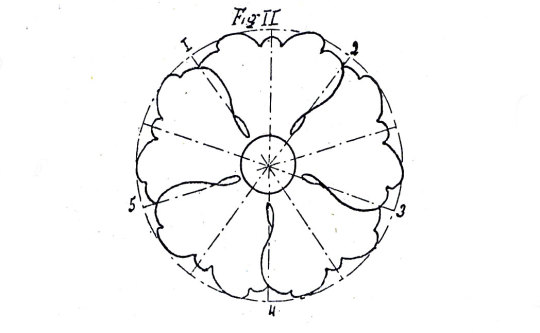
Let's remove the corolla: we see that the petals are fused together. This is a character that we will make appear, by drawing it in profile.
Figure 3 gives us this profile: we obtain it geometrically, drawing a horizontal line A B (fig. 3), the size of the diameter of the corolla, and a vertical C D, the height of the corolla, ending at the middle of A B. Let's divide A C and C B into two equal parts: the two middle parts will give us the petal seen from the front and the two extreme parts the petals seen from the side.

The calyx is established in figure 4 by construction lines, as in the previous figures. Let us draw the line A B, which will serve as an axis; carry on it the total height; then draw the lines C D and E F, on which we will carry the widths.
By joining figures 3 and 4, we will have the complete profile of the flower; but it must be observed that, in the example which we have chosen, the corolla occupies a third of the total height of the line A B (fig. 5).
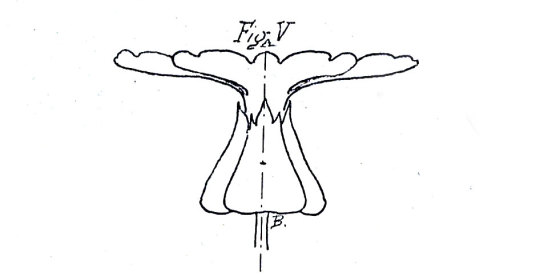
Figure 6 shows a completely closed bud and Figure 7 a bud where the flower is beginning to appear. Figure 8 shows how the small stems that carry each flower are attached to the main stem. We observe, at the foot of each of these stems, a tiny leaf which hides the point of insertion from us.
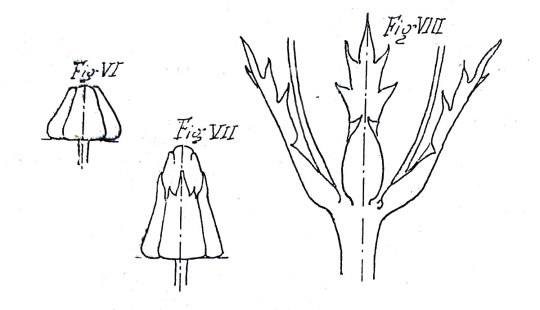
This preliminary study of the plant is absolutely essential in order to be able to interpret it correctly: the drawings that we have just made of each of its elements will form the documents that must always be kept in view for the composition of the decorative pattern.

Now that we know how to decompose the plant, it will be easy for us to use it for ornamentation by interpreting it. To do this, let's take the square shown in plate 1. Let's draw the construction lines: they will divide the square into four parts. In one of these parts, let's combine a pattern with the elements we just drew. It is here that the imagination of our readers will be able to give free rein, and that they will show their taste. A thousand combinations are available to them: I am convinced that they will be able to choose very graceful ones. For those who would be too embarrassed, Plate VI gives the example of a compound motif with the primrose. From the center starts the foot of the plant: to the right and left of the diagonal are grouped, in a desired symmetry, the stems, the flowers seen in profile and the buds. In the corner of the square, we placed the flower seen from the front. The motif was repeated, in an identical manner, in the other three parts. One can vary the arrangement of the decoration ad infinitum, making it richer or simpler, according to the nature of the object or the taste of each person. The board, as we have designed it, can be used to decorate a pincushion, a lamp base or a cushion.
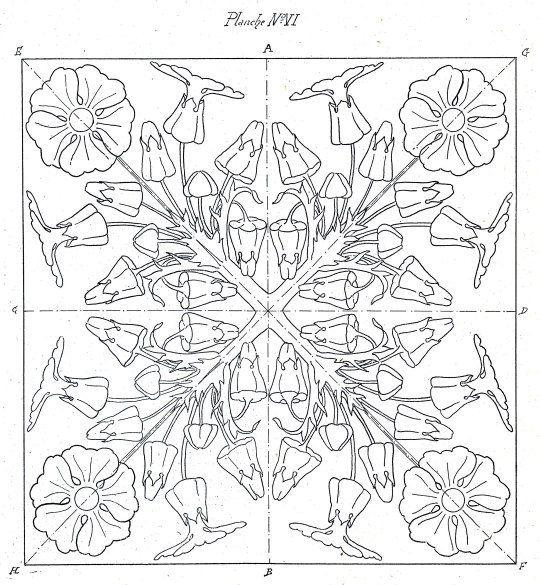
As it is easy to realize from plate VI, the interpretation is not the exact reproduction, the copy of the plant, but the adaptation of this plant to the pattern to be composed. It is necessary that the character be respected, but, either to make the composition more elegant, or to fill a void, or to allow a more interesting play of colors, it is allowed to amplify or diminish the importance of such or such part of the plant. Thus in plate VI, the corollas of the flowers in profile have been placed further outside the chalice than they actually are, in order to give more decorative elegance to the flower and less void in the composition, that the buds where the flower begins to appear, have more importance than in nature, while the completely closed buds, less interesting from the point of view of color, have retained their real size. The leaves hiding the attachment points have been enlarged and thus allowed us to reduce what was excessive for the eye the length of the stems and to finish the pattern near the center.
However, while exaggerating certain parts, it should never be done in such a way as to produce a shocking result for the viewer as a whole: the decorator must conceal his artifices and be the only one, so to speak, to know the modifications that he subjected the plant to it.
As far as dimensions are concerned, the plant is not always used in its real size: it can be used on a larger or smaller scale than life; but, when a scale has been adopted in an ornamentation, it must be kept throughout the whole, and not put, for example, a flower smaller than life next to another whose size has been doubled or tripled greatness.
III.
Choosing colors.
The composition is done; we have our pattern drawn. It is now a question of choosing the colors so as to form a pleasant ornamentation.
In decoration, color obeys special laws, which at first sight seem conventional, but which have been indicated by experience and scientifically verified. The main rule is to find the most appropriate tone either for the object to be decorated or for what surrounds it. This is how we will refrain from using violet for the decoration of a cushion intended to be placed on a red armchair. The two colors, thus associated, would produce a most shocking effect. It would be the same with violet and blue, while on the contrary violet and yellow, red and green, blue and orange agree perfectly together.
Some explanation is needed here.
We know that the seven colors of the prism fall into two categories; those which have been called the primary colors, which are red, yellow and blue, and those which have been called the secondary or binary colors, because they are each formed from the union of two primary colors, and which are orange, green and violet: orange formed from red and yellow, green from yellow and blue, violet formed from red and blue.
Now, an experience of several centuries has demonstrated that the primitive colors, in their pure state, are without harmony among themselves, whether they are united two by two, or whether they are considered all three together. If, on the contrary, we place next to one of the primary colors, a secondary color formed by mixing two other primary colors, we obtain a completely harmonious assembly of tone: this secondary color, which thus completes the primary color , has been called the complementary of this color. From these data, it is easy to establish the range of complements: red has green as its complement, composed of blue and yellow; blue has orange as its complement, composed of red and yellow; yellow has violet as its complement, made up of red and blue.
If you want to realize the role of the complementary vis-à-vis the primary color, embroider a violet strip with yellow: the violet will acquire its maximum intensity; it will be the same if you border a red fabric with a green border, or a blue fabric with an orange border.
But these observations are no longer so narrowly applied when the colors are not in their pure state, that is to say, such as they are given by a ray of sunlight refracted by the prism. It is the taste alone which can decide what effect a pink will produce next to a straw yellow or a light blue, whereas a pure red in opposition to an equally pure blue or yellow would give a certainly bad effect. Our readers, who are women, will be able to put, I am sure, as much discernment in the choice of their colors as they bring in that of a hat or a ribbon. It will not be necessary for them to have recourse to the remarkable works of M. Chevreul on this subject to fix their ideas.
The colors once chosen, it is a question of applying them on the drawing.
The first concern must be to determine the values that they will have to keep between them: this is how the background must be either lighter or darker than the decorative pattern, so that it stands out frankly. We advise, to begin with, to lay the tones flat, that is to say without worrying about the shadows which it is very difficult and often useless to render in decoration.
To replace the shadows, and to make the decorative pattern stand out more, each of the elements that make it up is surrounded by a "serti", that is to say either a thick line or a border, or even a soutache, depending on whether it is a painting, an embroidery or a tapestry. This setting can be a shade lighter or darker than the pattern it surrounds. The setting will be very useful for us, for example, if we have to draw a sheet turned over on itself: a flat tone would prevent us from indicating this movement, while using the setting, we can highlight it. In plate 6, if we cover the flower seen from the front with a flat tone, the setting will be essential to mark the distinction between the petals that compose it: otherwise, to make them stand out, we would have to use the drop shadow.
These are the general principles that must never be lost sight of in the composition of a decorative motif, whatever the object for which it is intended.
Translation via Google Translate with editorial revisions for clarity.
#La Mode illustrée#19th century#1890s#1897#on this day#June 27#periodical#fashion#pattern#decoration#design#essay#flowers#Forney
6 notes
·
View notes
Text
The Connection between the Creator and Their Interiors
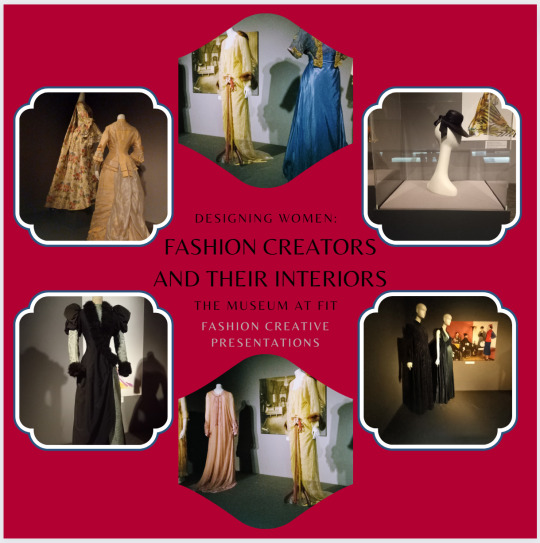
February 4, 2023
An innovative exhibit of more than 70 garments from female fashion designers including Jeanne Paquin, Robe à la Française, and Madame Hardy, showcasing how and why the aesthetics of interior decoration influenced their brands.
In the late 19th century when interior decoration became a possible profession, female designers constantly used French interiors to influence their own styles and designs to enrich their brand leading to an influx number of women starting haute couture houses in the fashion capitals of the world. Ultimately, these fashion creators devoted themselves to their luxe or modest interiors at home as they also carefully crafted their couture salons with their garments serving as testaments for the art of decoration.
The Museum at FIT showcases this connection, between the female creator and their interiors, as it dives into the different eras in fashion and how specific trends in interior entered into design. In the 1890s during the Belle Époque, luxurious silks dominated inside the home which translated to garments where a dramatic and overly feminine design was then produced and vice versa. Jeanne Paquin, who opened her couture house in 1891, rose to fame during the luxurious Belle Époque where she created innovative designs that epitomized the era by using silk taffeta and silk chiffon. Her success led her to become a powerful figure in fashion as the location of her couture house, on rue de Paix, reflected the exclusivity of her brand which later took abroad in London. Her couture shop in Paris was decorated in a modern and elegant way with a rococo revival style as she loved interiors and modern furnishings and was influenced by them like many female designers in her time and there on after.
During the 1890s to 1970s, many female designers felt that "the interior of a home is a natural project of the soul," as Coco Chanel herself stated.
DESIGNING WOMEN: FASHION CREATORS AND THEIR INTERIORS is on free display on W 27th Street, at FIT, until February 08, 2023.
Zuleica Prado
2 notes
·
View notes
Text
Soho House Mexico City: Where Luxury Meets Mexican Heritage
To book a stay or learn more about membership options, visit the **Soho House Mexico City** https://porhomme.com/2023/10/soho-house-mexico-city-celebrating-luxury-in-the-heart-of-mexico/ website and embark on a journey where luxury meets Mexican heritage in the heart of Colonia Juárez.
Membership at Soho House Mexico City grants access to a world of exclusive privileges and experiences, with annual rates starting at $651 quarterly. Whether indulging in gourmet dining, unwinding by the pool, or immersing oneself in the vibrant cultural scene of Mexico City, Soho House Mexico City promises a truly unforgettable experience.
!https://porhomme.com/wp-content/uploads/2023/10/Soho-House-Mexico-City-Celebrating-Luxury-in-the-Heart-of-Mexico-01.jpg
The accommodation at Soho House Mexico City epitomizes luxury and comfort, with four members-exclusive rooms exuding European elegance infused with Mexican influences. Each room boasts signature Soho House furnishings, Oaxacan throws, handmade tapestries, and local artwork, creating a sanctuary of tranquility amidst the bustling city. From rainforest showers to lavish marble bathtubs, every detail is meticulously curated to ensure a memorable stay.
For aficionados of fine spirits, the Tequila bar beckons with its vibrant mosaics and rustic charm, offering an extensive selection of tequila amidst an ambiance of laid-back sophistication. The property also features multiple bars, an outside courtyard, and a vinyl music room, providing ample opportunities for socializing and relaxation.
One of the highlights of Soho House Mexico City is its stunning Pool House, overlooking a sprawling 62-foot pool. Encased in glass panels reminiscent of European greenhouses, the Pool House offers a culinary journey inspired by Mexican flavors and California's vegetable-friendly cuisine. Led by the acclaimed Chef Christopher Kostow, the restaurant elevates dining to an art form, tantalizing the taste buds with exquisite regional offerings.
!https://porhomme.com/wp-content/uploads/2023/10/Soho-House-Mexico-City-Celebrating-Luxury-in-the-Heart-of-Mexico-06.jpg
Upon entering the premises, visitors are greeted by the Salon, a meticulously curated space that reflects the fusion of vintage charm and contemporary Mexican aesthetics. Soho House Design adorns the interiors with locally sourced furniture, textiles, and ceramics, paying homage to the building's French and baroque heritage. The adjacent Library and Drawing Room offer versatile spaces for work and relaxation, boasting high ceilings, abundant natural light, and a sense of historic grandeur.
The history of Soho House traces back to its humble beginnings at 40 Greek Street, Soho, London. Initially catering to individuals primarily from the media, arts, and fashion industries, Soho House has evolved to embrace a diverse community of individuals with a shared passion for creativity and culture. This inclusivity sets the tone for Soho House Mexico City, where members are welcomed into a world where luxury intertwines with local flair.
!https://porhomme.com/wp-content/uploads/2023/10/Soho-House-Mexico-City-Celebrating-Luxury-in-the-Heart-of-Mexico-03.jpg
In the heart of bustling Colonia Juárez in Mexico City stands a meticulously restored historic casa, now transformed into an epitome of luxury and sophistication - Soho House Mexico City. As an extension of the renowned international hospitality brand, Soho House, this exclusive private club marks the brand's inaugural venture into Latin America. Nestled amidst the vibrant streets of Mexico City, Soho House Mexico City seamlessly marries the region's rich cultural heritage with European elegance, offering an unparalleled experience for its discerning members and guests.
0 notes
Text
Luxury 1+1 Furnished Apartment for Sale in Alanya Konakli Telatiye!
🌟 Only 350 meters from the sea.
🏡 Furnished 1 bedroom, 1 living room, separate kitchen, 1 bathroom/wc, 1 balcony.
📐 60 m2 wide, west facing.
🏢 Complex amenities: outdoor swimming pool, lush garden, children's playground.
Contact now to discover the privileged life of this luxury apartment! 📞🏠
Alanya Konaklı Telatiye’de Satılık Lüks 1+1 Eşyalı Daire!
🌟 Denize sadece 350 metre mesafede.
🏡 Eşyalı 1 yatak odası, 1 salon, ayrı mutfak, 1 banyo/wc, 1 balkon.
📐 60 m2 genişliğinde, Batı cephesine sahip.
🏢 Site olanakları: açık yüzme havuzu, yemyeşil bahçe, çocuk oyun alanı.
Bu lüks dairenin ayrıcalıklı yaşamını keşfetmek için hemen iletişime geçin! 📞🏠
📞+90 532 637 68 87
☛ https://nazarhomes.com



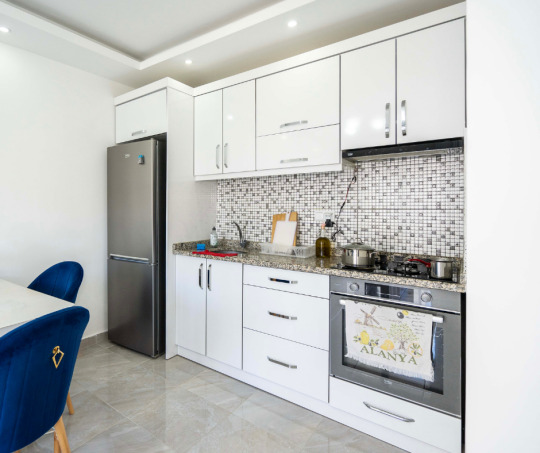
#Alanya #Konaklı #Telatiye #SatılıkDaire #LüksYaşam #DenizeYakın #ApartmentForSale #LuxuryLife #NeartheSea #NazarEmlak #NazarRealEstate
#Alanya#Konaklı#Telatiye#SatılıkDaire#LüksYaşam#DenizeYakın#ApartmentForSale#LuxuryLife#NeartheSea#NazarEmlak#NazarRealEstate
0 notes
Text
Korea room salon Culture Las Vegas, Good room salon in Seoul
Korea Room Salons are the model of exclusive private lounges in South Korea, offering a premium experience to discerning customers looking for top-class entertainment, culinary pleasures and fun.
These elegant spaces boast discreet settings decorated with luxurious furnishings, eye-catching lighting and captivating artwork.
Guests are offered a wide range of alcoholic beverages and an array of…
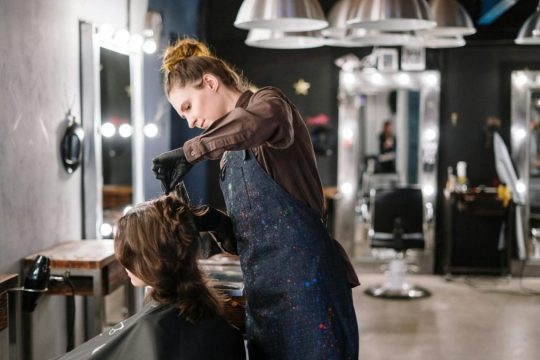
View On WordPress
#korea room salon#korea room salon los angeles#korea room salon los vegas#korea room salon nyc#korean room salon design#price#room salon culture korea
0 notes
Text
Luxe Haven: Elevating Beauty Experiences at Bratislava's Premier Salon Sanctuary

Nestled amidst the charming streets of Bratislava, Slovakia, lies a haven of indulgence and transformation—the revered kozmetický salón Bratislava. More than just a destination for beauty treatments, this sanctuary embodies the epitome of luxury and sophistication, offering a bespoke experience that transcends the ordinary.
From the moment one steps through its doors, Beauty Salon Bratislava envelops visitors in an ambiance of serenity and opulence. The sleek, modern interiors are adorned with plush furnishings and ambient lighting, creating an atmosphere that exudes tranquility and refinement. Every detail, from the delicate floral arrangements to the soothing background music, is meticulously curated to transport guests into a world of unparalleled relaxation and rejuvenation.
At the heart of Beauty Salon Bratislava's allure lies its unwavering commitment to excellence. With a team of skilled artisans at the helm, the salon offers an extensive range of services tailored to meet the unique needs and preferences of each guest. From indulgent facials and luxurious massages to precision haircuts and transformative beauty treatments, every experience is crafted with precision and care, ensuring unparalleled results that exceed expectations.
But beyond its exceptional services, Beauty Salon Bratislava sets itself apart with its dedication to innovation and technology. Equipped with state-of-the-art equipment and cutting-edge techniques, the salon stays at the forefront of industry trends, offering clients access to the latest advancements in beauty and wellness. Whether it's harnessing the power of advanced skincare technologies or embracing innovative hair coloring techniques, Beauty Salon Bratislava empowers guests to achieve their beauty goals with confidence and ease.
Moreover, what truly distinguishes Beauty Salon Bratislava is its unwavering commitment to holistic well-being. Recognizing that true beauty radiates from within, the salon offers a range of wellness services designed to nourish the body, mind, and spirit. From holistic massages and reiki sessions to mindfulness workshops and yoga classes, guests are invited to embark on a journey of self-discovery and renewal, leaving them feeling refreshed, revitalized, and balanced.
Furthermore, Beauty Salon Bratislava prides itself on its dedication to sustainability and ethical practices. Every product used in its treatments is carefully selected for its quality, efficacy, and eco-conscious ethos, ensuring that guests can indulge in luxury with a clear conscience. Additionally, the salon implements environmentally friendly practices throughout its operations, from energy-efficient lighting to eco-friendly packaging, demonstrating its commitment to preserving the planet for future generations.
Beyond its exceptional services and commitment to sustainability, Beauty Salon Bratislava fosters a sense of community and connection among its guests. Through regular events, workshops, and collaborative initiatives with local artists and artisans, the salon serves as a gathering place where like-minded individuals can come together to share their passion for beauty, wellness, and self-care.
In essence, Beauty Salon Bratislava isn't merely a place to enhance one's outward appearance—it's a sanctuary where guests can escape the hustle and bustle of everyday life and indulge in a transformative experience that nurtures the body, mind, and soul. With its unwavering commitment to excellence, innovation, and holistic well-being, Beauty Salon Bratislava sets the standard for luxury beauty destinations, leaving an indelible mark on the landscape of Bratislava's beauty industry.
1 note
·
View note
Text
Unlocking the Door to Elegance: A Comprehensive Guide to Choosing the Perfect Beauty Salon
In today's bustling world, where self-care has become a priority, the quest for the ideal beauty salon has become more significant than ever. With an abundance of options available, it can be overwhelming to pinpoint the salon that aligns perfectly with your needs and preferences. Fear not, as we embark on a journey to unravel the secrets to selecting the ultimate beauty sanctuary. From ambiance to expertise, we'll delve into every aspect to ensure your salon experience transcends mere satisfaction and reaches the pinnacle of indulgence.
Understanding Your Needs: The Key to a Fulfilling Salon Experience
Before diving into the plethora of salon choices, it's imperative to introspect and identify your specific requirements. Are you seeking a tranquil retreat for relaxation, or are you on the hunt for cutting-edge treatments and avant-garde styles? Understanding your needs will serve as a compass, guiding you through the labyrinth of salon offerings with clarity and purpose.
Crafting the Perfect Ambiance: Where Luxury Meets Comfort
Step into a realm where every detail is meticulously curated to cater to your senses. The ambiance of a beauty salon plays a pivotal role in elevating your experience from ordinary to extraordinary. From soothing lighting to plush furnishings, every element should exude an aura of opulence and serenity. Whether you prefer the minimalist charm of a contemporary salon or the timeless elegance of a vintage-inspired setting, finding a salon that resonates with your aesthetic sensibilities is paramount.
Expertise Beyond Compare: The Artistry of Skilled Professionals
At the heart of every exceptional beauty salon lies a team of seasoned professionals, each wielding their craft with finesse and precision. From master hairstylists capable of transforming your locks into works of art to skincare experts armed with the latest innovations, the expertise of salon professionals is unmatched. When perusing potential salons, inquire about the qualifications and experience of their staff, ensuring they possess the skills necessary to bring your vision to life.
A Symphony of Services: Tailored Treatments for Every Need
The hallmark of a top-tier beauty salon lies in its diverse array of services, each tailored to address a myriad of needs and desires. Whether you're in need of a rejuvenating facial to restore youthful vitality to your complexion or a luxurious manicure and pedicure for a touch of glamour, the options are boundless. Seek out salons that offer a comprehensive menu of services, allowing you to embark on a transformative journey of self-care and pampering, all under one roof.
Embracing Innovation: Where Tradition Meets Modernity
In an industry perpetually evolving, staying abreast of the latest trends and innovations is paramount. The most exceptional beauty salons seamlessly blend traditional techniques with cutting-edge technologies, offering clients an unparalleled experience that marries the best of both worlds. From state-of-the-art hair coloring techniques to advanced skincare treatments, embracing innovation ensures that your salon experience is not only enjoyable but also results-driven.
A Sanctuary of Wellness: Nurturing Body, Mind, and Soul
Beyond the realm of aesthetic enhancement, the finest beauty salons serve as sanctuaries of wellness, nurturing not only the body but also the mind and soul. From tranquil spa treatments designed to melt away stress and tension to holistic therapies that promote inner harmony and balance, the holistic approach to beauty is deeply ingrained in every facet of the salon experience. Seek out salons that prioritize holistic well-being, allowing you to emerge not only looking radiant but also feeling rejuvenated from within.
Conclusion: The Quest for Beauty Perfected
In the pursuit of beauty perfected, the choice of a beauty salon is not merely a decision but rather a journey of self-discovery and indulgence. By understanding your needs, seeking out expertise, embracing innovation, and prioritizing holistic wellness, you can unlock the door to a salon experience that transcends the ordinary and embraces the extraordinary. So, let your journey begin, and may your quest for beauty lead you to the salon of your dreams.
1 note
·
View note
Text
Best Hair Beauty Salon in Seven Kings: Where Excellence Reigns Supreme
Being the Best hair salon in Seven Kings is something we at Love Hair Salon are proud of. Every visit is an opportunity for our team of very talented and knowledgeable stylists, colorists, and technicians to demonstrate their mastery of their trade and commitment to providing outstanding results. Our Best hairdressers in Seven Kings have a wide range of talents, from cutting-edge style techniques to sophisticated cutting techniques, which allows them to produce looks that are daring and trendsetting to timeless and traditional. However, what makes them stand out is their natural ability to comprehend the distinct tastes, face shapes, and lifestyles of each customer, creating personalized looks that not only accentuate your best features but also flow naturally into your everyday activities.Our spacious, well-furnished salon exudes a sense of understated luxury, with elegant marble accents, soft lighting, and a soothing color palette that begs you to relax. As you relax and enjoy a refreshing beverage from our complimentary bar, our friendly stylists will converse with you. To ensure that every service is tailored to your needs, they will take the time to get to know your specific preferences and objectives. Discover what makes Love Hair Salon special and begin an unforgettable hair adventure that will change your life. Let our passion, expertise, and unwavering dedication take you to the pinnacle of hair perfection, where every appointment is a special pleasure and each hair strand is a work of art.
#Love Hair Salon#Best hair salon in Seven Kings#Best hairdresser in Seven Kings#Hair beauty salon in Seven Kings
0 notes
Text
Opulent Origins: Understanding the Roots of Old Money Aesthetic
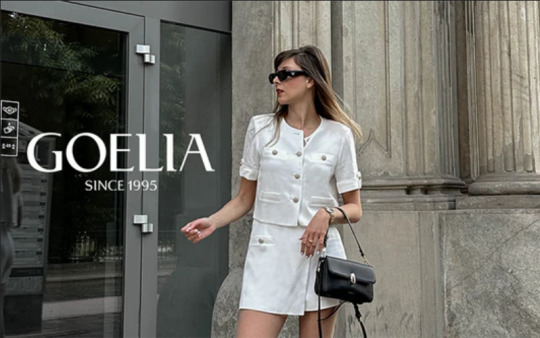
In the realm of luxury and opulence, there exists a distinct aesthetic often associated with old money—the kind that whispers of heritage, tradition, and a refined sense of taste. It's a style that transcends trends and exudes a timeless elegance, captivating the imaginations of many. But what exactly are the origins of this old money aesthetic? Delving into the depths of history and culture unveils a rich tapestry of influences that have shaped this enduring phenomenon. Old money aesthetic
At its core, the old money aesthetic is steeped in the traditions of aristocracy and nobility. Originating in Europe during the medieval period, the concept of old money can be traced back to landowning families whose wealth was passed down through generations. These noble lineages cultivated a lifestyle centered around privilege, refinement, and exclusivity. From lavish estates adorned with intricate architecture to extravagant feasts that showcased culinary prowess, the aristocracy set the standard for luxury living.
One of the defining characteristics of the old money aesthetic is its emphasis on understated sophistication. Unlike the flashy displays of new wealth, old money prefers to exude a sense of effortless elegance. This preference for subtlety can be attributed to the aristocracy's desire to distinguish themselves from the nouveau riche, who often flaunted their newfound riches through ostentatious displays of wealth. Instead, old money favored quality over quantity, investing in timeless pieces of art, heirloom jewelry, and bespoke tailoring that spoke to their discerning taste and refined sensibilities.
The Renaissance period marked a significant shift in the development of the old money aesthetic. As Europe experienced a cultural reawakening, wealthy patrons became patrons of the arts, commissioning masterpieces from renowned artists and architects. This era saw the rise of opulent palaces adorned with frescoes, marble sculptures, and ornate furnishings, reflecting the wealth and influence of noble families. The Italian Renaissance, in particular, introduced a newfound appreciation for classical beauty and symmetry, which would go on to influence the design principles of the old money aesthetic for centuries to come.
During the Age of Enlightenment, the old money aesthetic underwent further refinement as intellectuals and philosophers championed the pursuit of knowledge and reason. This era saw the emergence of salons and coffeehouses where the elite gathered to engage in intellectual discourse and cultural exchange. The values of education, civility, and refinement became synonymous with the old money lifestyle, shaping the social norms and etiquette of the upper class.
The Industrial Revolution brought about profound changes in society, ushering in an era of unprecedented wealth and innovation. While the nouveau riche amassed fortunes through industrialization and commerce, the old money aristocracy remained steadfast in their adherence to tradition and heritage. Yet, they were not immune to the changing times. Many noble families diversified their investments, venturing into industries such as banking, railways, and shipping, which further consolidated their wealth and influence.
In the aftermath of World War I, the old money aesthetic experienced a resurgence as the world sought stability and reassurance in the face of uncertainty. The Roaring Twenties saw a return to extravagance and excess, with the elite indulging in luxurious parties, high-stakes gambling, and international travel. This golden age of opulence was epitomized by the glamorous lifestyles of socialites like the Vanderbilts, Astors, and Rockefellers, who were the epitome of old money refinement.
Despite the passage of time, the old money aesthetic continues to endure as a symbol of status, taste, and sophistication. From the grandeur of European palaces to the understated elegance of New England estates, the legacy of aristocratic wealth lives on in the architecture, art, and cultural traditions that define the world of luxury. While the faces of old money may change, its timeless allure remains a testament to the enduring power of tradition and heritage in shaping our perception of wealth and privilege.
1 note
·
View note
Text
Kajal Beauty Salon: Where Locks Transform into Masterpieces
Kajal Beauty Salon is a Luxury hair salon and decadence right in the middle of Canberra. For many years, this legendary venue has been recognized as the Best salon in Canberra to get hair art, drawing followers from all over the city. You'll become enveloped in an opulent and sophisticated ambiance as soon as you walk through the doors, with every little element carefully created to bring your experience to new levels of relaxation and renewal. Hair color is an art form, and our master colorists at Kajal Beauty Salon are the maestros who use their brushes with unmatched originality and ability. Our extensive collection of hair color price list provides a delectable selection of choices to suit every taste and fashion sense. A feeling of subdued luxury permeates our large, tastefully furnished salon, which features sleek marble accents, gentle lighting, and a calming color scheme that beckons you to repose. They will take the time to learn about your particular tastes and goals so that each service is customized to meet your needs. Learn what makes Kajal Beauty Salon unique and start a life-changing hair journey that will not soon be forgotten. Allow our enthusiasm, knowledge, and unshakable commitment to lead you to hair perfection where each visit is a treasured treat and every hair strand is a work of art.

0 notes